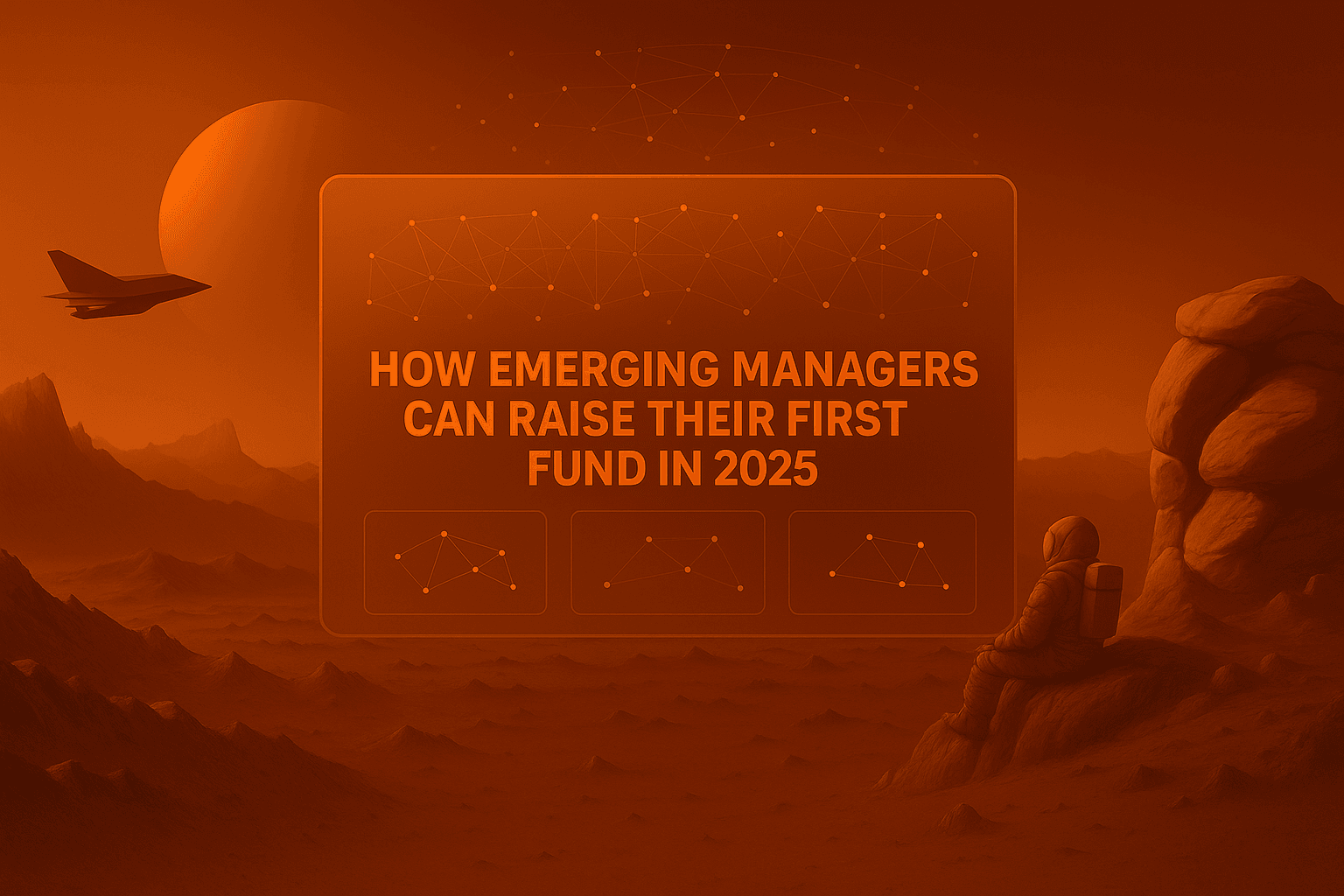Six Venture Capital Trends That Will Shape 2025
Venture in 2025 is reallocating toward real signals. This Altss briefing lays out six allocator-grade trends—AI verticalization, smarter mega-rounds, the health-tech reset, climate as core infra, the family-office surge, and domicile strategy—plus a valuation reality check on SF pre-seed caps.

Six Venture Capital Trends That Will Shape 2025
Venture in 2025 isn’t chasing hype—it’s reallocating toward verifiable signal.
After an 18-month contraction, capital is flowing again but through tighter gates. LPs are prioritizing DPI over notional IRR. GPs are rewarded for process clarity, not charisma. Founders are assessed on burn efficiency, data rights, compliance readiness, and time-to-evidence—not just “AI inside.” The winners don’t shout louder; they sequence better and show their math.
Below are six allocator-grade shifts we’re seeing across mandates, plus a short valuation reality check on San Francisco pre-seed caps—and how Altss helps you act at the moment of real intent.
1) AI capital goes vertical—and compliance-aware
The market has moved from horizontal “AI for everything” to domain-specific AI tied to proprietary data, regulated workflows, and measurable unit economics. Buyers are asking a different question: Where does this model lower latency, lower error, or lower opex—inside my compliance box?
Two forces are shaping diligence:
- Data rights: provenance and exclusivity are now first-meeting topics.
- Regulation: staged obligations under the EU AI Act (2025–2026 application) are pushing founders to show intended-use classification, post-market monitoring, and auditability (especially in health, finance, and safety-critical contexts).
What gets funded in 2025
- AI embedded in operational software: industrial automation, supply-chain orchestration, clinical decision support, financial crime/KYC, legal ops.
- Model/inference economics that beat incumbent workflows (including quality-adjusted latency).
- Deployment paths that anticipate audits rather than fear them.
Altss angle: Our OSINT tagging distinguishes vertical AI from generic GenAI by mapping reference customers, regulated endpoints, and data-rights disclosures. That lets allocators filter to defensibility and lets founders target funds that actually buy vertical theses—not model hype.
2) Mega-rounds return—selectively—and capital is smarter
Nine-figure checks are back in AI infrastructure, cyber, fintech rails, and climate adjacencies—but they’re concentrated. Late-stage buyers are underwriting:
- Normalized valuations (2021 premiums are gone).
- $10M+ ARR with cohort health and a signed path to margin lift.
- Enterprise-grade GTM (partner channels, services attach, compliance posture).
This isn’t a collapse—it’s a re-rating to evidence. Teams clearing bar-height have two things others don’t: auditable revenue and two capital outcomes (credible strategic M&A or sustainable stand-alone).
Operator playbook
- Price to 2025 comps, not 2021 nostalgia.
- Put your margin-lift plan in writing (where it comes from and when).
- Build a “dual exit” narrative you could present to an operator tomorrow.
Altss angle: Track which late-stage funds are actually deploying this quarter at your round size and where they sit on fund age/unrealized. Our OSINT picks up term-sheet velocity, hiring patterns, and portfolio recycling so you spend time only where capacity + timing exist.
3) Health-tech regains confidence—where systems value is provable
Health dollars are returning to platforms that remove friction at scale: clinical-trial automation, EHR interoperability, diagnostics with audit trails, and AI assist that reduces medical-legal risk. Policy is leaning in as well—e.g., EU-level med-tech innovation funding approved in July 2025—which matters because payer-aligned subsidies and reimbursement clarity shorten IC cycles.
What underwrites in 2025
- Payer integration (codes, prior-auth logic, outcomes-priced contracts).
- Data governance you can defend (consent, secondary use, retention).
- Regulatory readiness mapped to AI-risk layers and device rules in target markets.
Altss angle: Filter managers and CVC arms with proven digital-health exposure. Our tracking flags new fund launches and buy-side intent (hiring, partnerships) across the U.S., UK, Nordics, and DACH where payer integration is real—not aspirational.
4) Climate tech becomes core portfolio infrastructure (not a side “ESG” sleeve)
Climate has matured into portfolio core—especially grid software, long-duration storage, industrial heat, and process electrification. The underwriting difference in 2025: grants + offtakes + policy.
- The EIC Work Programme 2025 set aside substantial funding, including EIC Accelerator budgets (grants up to €2.5M, equity €0.5–€10M, with STEP cases up to €30M). E
- The EU Innovation Fund added ~€319M in July 2025 to six industrial decarbonization projects—another signal that public money is crowding private capital into credible industrial pathways.
For VCs and crossover investors, that cocktail matters: policy-aligned adoption lowers pilot risk; blended finance improves payback math; project debt can sit under equity.
Altss angle: Map LP mandates tilting to climate and identify co-funders (public programs + strategics) to structure blended rounds. Our coverage flags allocators with grid, storage, industrial decarb in-window so outreach hits actual deployment periods.
5) Family offices become decisive, thematic LPs
Family offices are writing fast, conviction checks across early and growth, often with co-invest rights and sleeves that rotate intra-year (AI infra, climate/industrial decarb, dual-use/cyber, specialty health). They judge managers on process clarity (co-invest delivery, governance, reporting cadence), not just returns storytelling.
What this means for GPs
- Treat co-invests as a product: selection criteria, governance, timelines, and two examples.
- Lead with mandate fit + timing in your opener.
- Make risk hygiene a first-mile step (sanctions/AML/UBO)—it reads as professionalism.
Altss angle: We track 9,000+ verified family offices worldwide on a ≤30-day refresh cadence. OSINT detects new sleeves, side pockets, and co-invest behavior—and maps warm paths (advisors/boards/syndicates). Fewer dead ends; more “yes, we’re allocating this quarter.”
Pricing: $15,500/year. No exports. No open API. Outreach that respects the allocator’s clock.
6) Domicile strategy turns from footnote to edge
Domicile now signals operational seriousness. LP counsel prefer familiar, fast-to-market regimes that keep compliance friction low and closing velocity high.
- Luxembourg RAIF (Law of 23 July 2016): not product-supervised by CSSF but must be managed by an authorised AIFM; benefits from AIFMD passporting via the AIFM and avoids product-level authorization—one reason sponsors cite speed. The CSSF’s June 2025 Circular 25/894 clarified information IFMs must submit when managing non-authorised funds (including RAIFs).
- Jersey Private Fund (JPF): July 2025 enhancements removed the 50-investor cap (replacing it with a “restricted group” test) and introduced 24-hour authorization for complete applications—practical improvements LPs notice.
- Guernsey PIF: a fast-track, proportionate regime built for professional investors; many sponsors use it for clubbier bases and speed from term sheet to first close.
Altss angle: Monitor manager launches, fund registrations, and domicile patterns to anchor a structure your LPs actually say “yes” to—before you burn calendars.
Valuation reality check (SF pre-seed caps)
Yes, San Francisco AI pre-seed caps at $20–25M are real in a thin top-decile band—typically repeat founders or frontier-AI pedigrees with paid design partners and clear data-rights stories. Treat that as exception-pricing, not the new baseline.
Across the broader market:
- Pre-seed medians remain single-digit. Carta’s 2025 reads show median pre-seed SAFE caps near $7.5–10M depending on check size.
- Seed medians are higher but selective: Carta’s Q1 2025 cut showed $16M median seed pre-money even as seed deal counts stayed tight; Series A medians hit new highs in Q2 2025, reflecting a bar shift at early growth.
How to use this without getting burned
- If you’re not in the top-decile SF AI cohort, price to a cap an IC can underwrite (customer math, data rights, margin path).
- If you are targeting a high cap, keep the raise modest and the process tight—or you’ll invite priced-round scrutiny at seed-level metrics.
Altss angle: We separate the outliers you’re hearing about from the buyers funding the median reality. For Bay Area AI, we flag the specific firms writing $20–25M-cap pre-seed SAFEs this quarter; for everyone else, we route you to in-window investors underwriting $7.5–12M caps or $16M seed.
How to act on these trends (90-day plan)
Days 0–10 — Write the underwritable plan.
Pick one milestone you can hit in 4–6 months that a committee can underwrite: e.g., enterprise channel with defined payback, a regulatory step tied to a buyer, or a margin step-up proven with cohort math. Draft a two-page capital-efficiency memo (use-of-proceeds, pacing, reserves, hiring).
Days 11–30 — Build the heat map.
In Altss, filter to allocators in-window for your sector, check size, and instrument (fund vs co-invest vs direct). Add late-stage buyers with capacity for your round size, family offices with live sleeves in your theme, and CVCs with an operational champion.
Days 31–60 — Ship the evidence, not adjectives.
Replace narrative decks with audited ARR and cohorts, pipeline/LOIs, data-rights contracts, security posture, and a two-page co-invest delivery explainer (selection → governance → timelines → examples).
Days 61–90 — Run a disciplined process.
Time-box partner meetings; keep an angel/syndicate lane warm; use Altss intent signals to sequence follow-ups the week targets flip to “active.” Announce only after docs + wires.
The Altss difference—signal that closes
- Mandate timing: See who is actually deploying this quarter—by sector, check size, and instrument.
- Warm paths: Convert cold lists into conversations via advisor/board/syndicate overlaps.
- OSINT signals: Filings, corporate registers, regulatory feeds, hiring and portfolio moves flag intent before the banker email arrives.
- Continuously refreshed coverage: 9,000+ verified family offices plus targeted institutional/corporate profiles, updated on a ≤30-day cadence.
- Risk hygiene baked in: Sanctions/AML indicators on every allocator profile.
- Designed for control: No exports. No open API.
- Pricing: $15,500/year.
Altss in one line: capital formation that respects the market’s clock.
Related articles

Anchor Investors for Emerging Managers & Startups: The 2025 Playbook
A step‑by‑step playbook for landing an anchor investor (or LP), understanding anchor vs. lead, structuring first closes, and creating momentum in your round.

How Emerging Managers Can Raise Their First Fund in 2025
How emerging managers can raise their first fund in 2025: a precise, step-by-step playbook that covers allocator targeting, pipeline math, ILPA-aligned diligence, OSINT signals, and modern outreach. Written for GPs and IR teams using verified allocator data and real-time LP coverage.